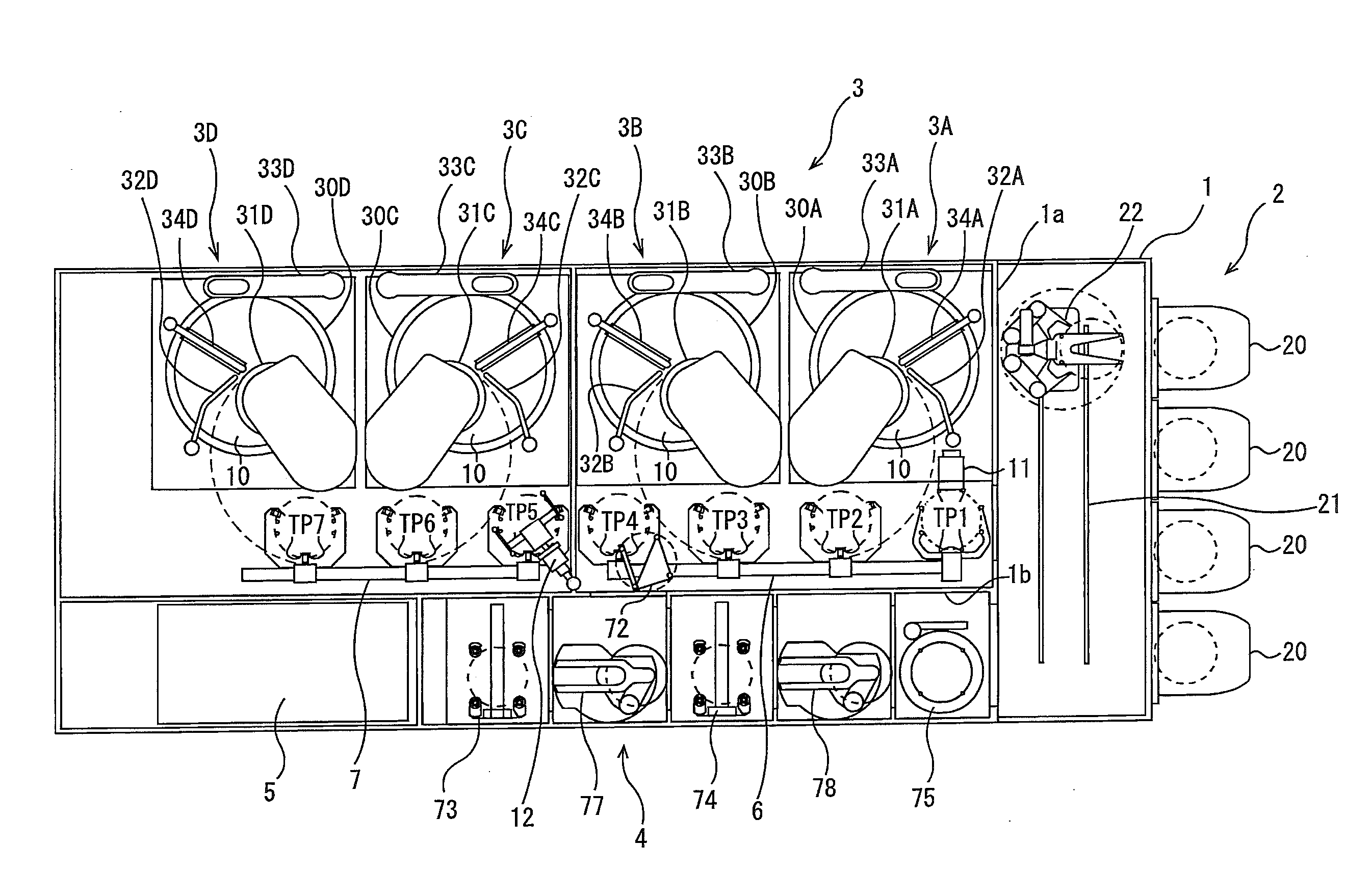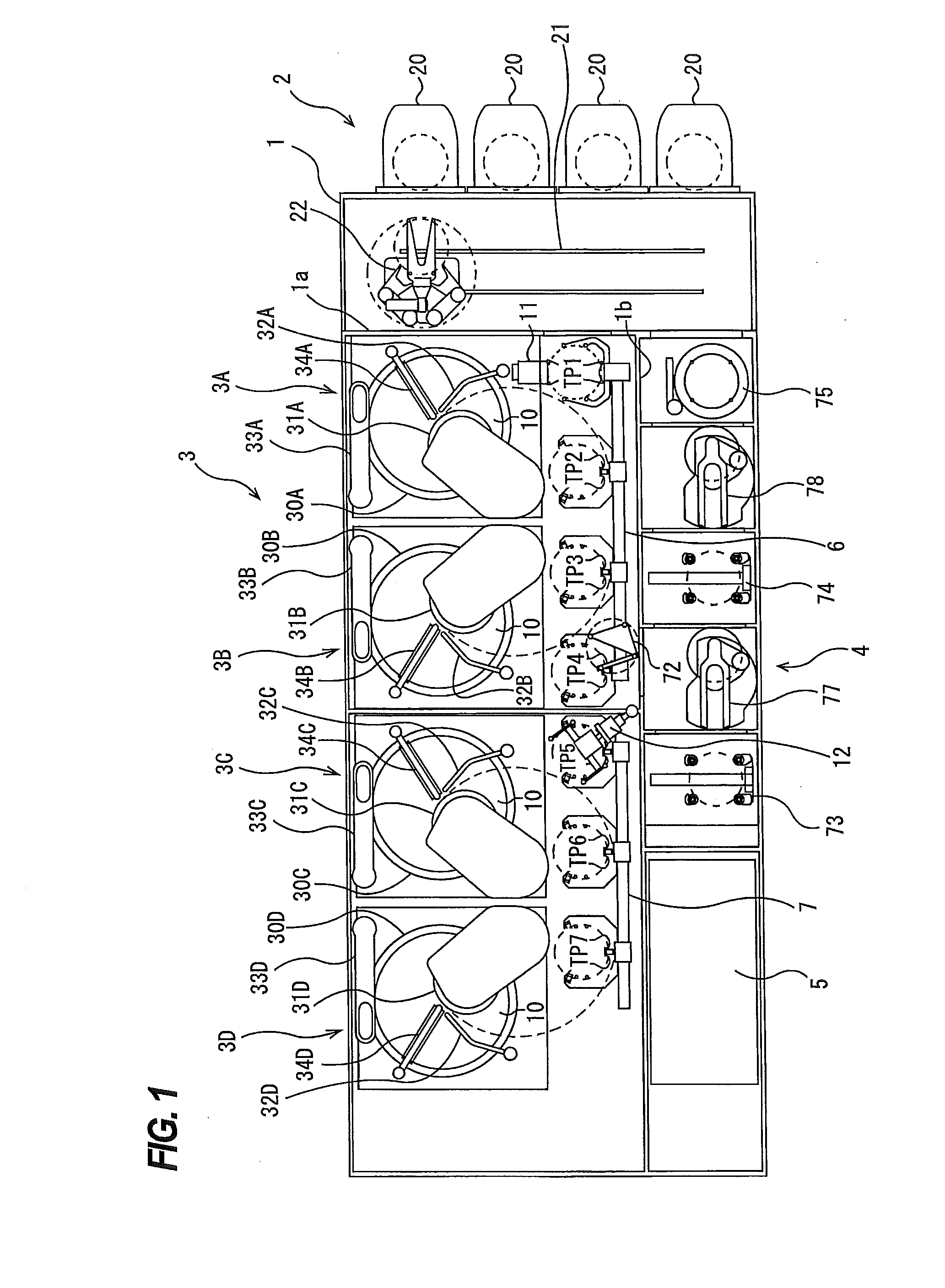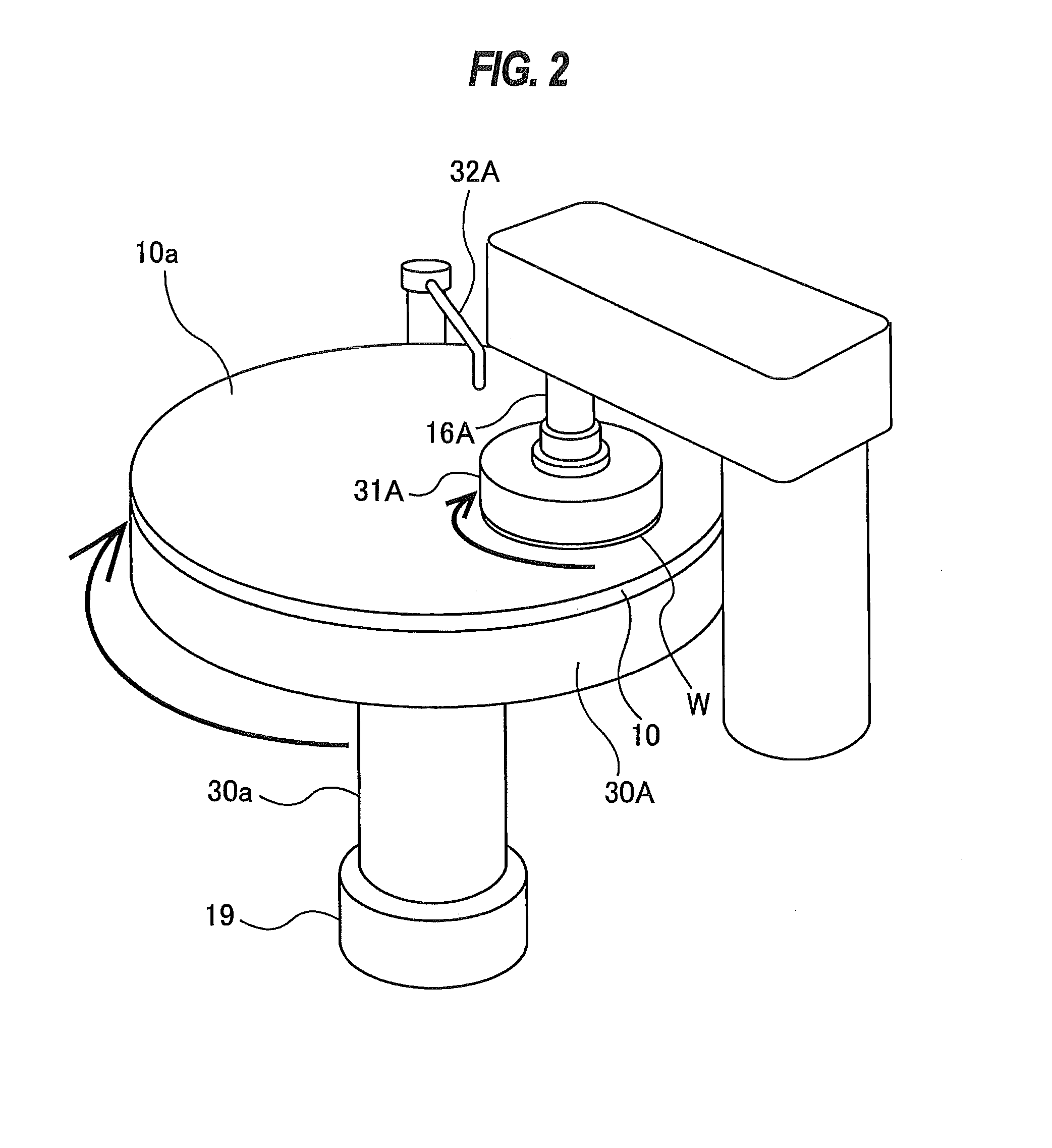Polishing apparatus
a technology of polishing apparatus and rotary blade, which is applied in the direction of lapping machines, manufacturing tools, transportation and packaging, etc., can solve the problems of increasing maintenance costs and running costs, poor film formation (or step coverage) over stepped configurations of thin films, and reducing the operation rate of the apparatus
- Summary
- Abstract
- Description
- Claims
- Application Information
AI Technical Summary
Benefits of technology
Problems solved by technology
Method used
Image
Examples
example 2
[0129 represents an exemplary selection of polishing heads in a case of a small amount of polishing of a wafer, a high demand for planarization of a wafer surface and a high demand for no defect. In this example 2, the rigid-body polishing head of the first polishing unit 3A is not used, while the second multi-chamber polishing head of the second polishing unit 3B, the second multi-chamber polishing head of the third polishing unit 3C, and the rigid-body polishing head of the fourth polishing unit 3D are used. Example 3 represents an exemplary selection of polishing heads in a case of a small amount of polishing of a wafer, a low demand for planarization of a wafer surface and a high demand for no defect. In this Example 3, the rigid-body polishing head of the first polishing unit 3A and the second multi-chamber polishing head of the third polishing unit 3C are not used, while the second multi-chamber polishing head of the second polishing unit 3B and the rigid-body polishing head o...
PUM
| Property | Measurement | Unit |
|---|---|---|
| pressure | aaaaa | aaaaa |
| pressure | aaaaa | aaaaa |
| thickness | aaaaa | aaaaa |
Abstract
Description
Claims
Application Information
 Login to View More
Login to View More - R&D
- Intellectual Property
- Life Sciences
- Materials
- Tech Scout
- Unparalleled Data Quality
- Higher Quality Content
- 60% Fewer Hallucinations
Browse by: Latest US Patents, China's latest patents, Technical Efficacy Thesaurus, Application Domain, Technology Topic, Popular Technical Reports.
© 2025 PatSnap. All rights reserved.Legal|Privacy policy|Modern Slavery Act Transparency Statement|Sitemap|About US| Contact US: help@patsnap.com



